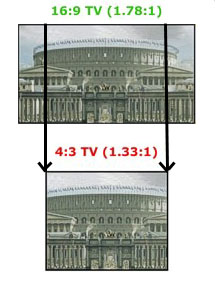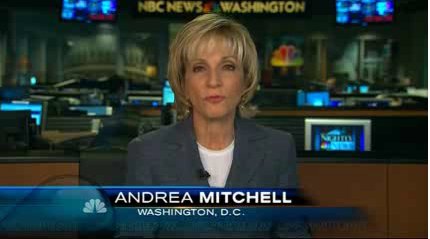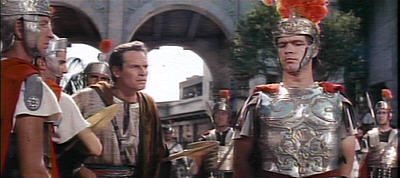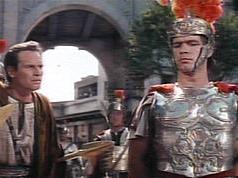Today after watching a 720P HD movie of The Matrix Revolutions on my Widescreen TV I noticed something funny. This is a screenshot of the HD version.
I also have the Matrix Revolutions Widescreen Edition DVD.
At the bottom of the box it says
This is a screenshot of the DVD version.....WIDESCREEN VERSION PRESENTED IN A "LETTERBOX" WIDESCREEN FORMAT PRESERVING THE "SCOPE" ASPECT RATIO OF ITS ORIGINAL THEATRICAL EXHIBITION ENHANCED FOR WIDESCREEN TVS
Maybe I'm missing something, but the DVD widescreen version seems to be missing quite a bit of picture.
Any explanation ??
Try StreamFab Downloader and download from Netflix, Amazon, Youtube! Or Try DVDFab and copy Blu-rays! or rip iTunes movies!
+ Reply to Thread
Results 1 to 15 of 15
Thread
-
-
The DVD isn't missing anything. It is the intended ratio and vision of the director's.
For a lot of HD releases on cable, they create an open matte version of the film. Sometimes with the approval of the director, a lot of times not.
Even though you are getting more picture on the HD cable version of the film, it's still modifed to fit that screen.
2.35:1 is the intended vision and ratio. -
Ok, thanks for clearing that up a bit.
So 2.35:1 is the dvd widescreen version that I'm seeing ?
It baffles me why they would not do it like the HD version, it fills the enitre screen, shows more picture AND looks nice. -
YesOriginally Posted by jjhann
I say again, it is the intened ratio and vision of the directors'.Originally Posted by jjhann
Why didn't they make TVs to accommodate films is an equality valid question. -
You get more height and less width. Personally, I like the extra width if that is how it is shot. If you are seeing or are concerned about the black bars then the movie obviously isn't holding your attention. I have a 4:3 TV with 16:9 switching. I watch a lot of movies, most widescreen, and 2.35:1 or wider is my favourite format. I have never noticed the black bars.
Read my blog here.
-
Explain how you got those captures. 1217x685 (square pixel) is 16:9 but 720p (square pixel) would be 1280x720 for 16:9 and a 2.35 film would be lettterboxed for active area to 1280x545. The rest goes to letterbox.
Standard DVD is not square pixel. 720x480/576 has other that square pixel aspect ratio (PAR).
1252x533 isn't within DVD spec. 16:9 should be 853x480 when expanded horizontally to square pixels. 2:35 movies should be 853x362 with the remainder of the 480 vertical pixels going to letterbox. -
wide screen DVD was made to match EDTV & other big screen formats NOT HD, for HD discs format you need need HD or bluray discs and player, HD TV height Hd broadcast may or may not use the full height of a movie dpends on the network in question and what they choose too do, in many cases the wide screen SD 720*480 dvd doesNOT use the full movie height
-
Although resolution may differ between DVD and full HDTV, aspect ratio does not. Letterbox is par for the course in both source resolutions. This chart shows how typical program aspect ratios are handled.Originally Posted by theewizard

1.78:1 is typical for HDTV broadcasts.
1.85:1 and 2.35:1 are typical film aspect ratios.
Each display has a native resolution. The chipset in the TV will scale the various input resolutions (e.g. 720x480, 720x576, 1280x720, 1920x1080) to the native resolution of the display (e.g. 768x480, 1024x768, 1366x768, 1920x1080, etc.) -
As broadcasting goes digital in both 16:9 and 4:3, the following "side crop" technique is being used to put a full screen display on 4:3 sets. TV programming like news, sports and chat shows are usually formatted to work in both 16:9 and 4:3. Essential action is kept in the 4:3 area. This doesn't work for movies which have essential action in the sides. Movies are usually letterboxed or pan scanned to 4:3.

-
Both pictures you posted have the same proportions and the WS version evidently comes from fullscreen top/bottom cropped, so some parts are really missing.Originally Posted by jjhann
This way some DVDs are optimized for WS when original film is 4:3. -
The 2 pictures above show how broadcast telvision is shot so that main action is carried on both the 4:3 and 16:9 TV sets. Live sports are shot this way. Also news and live entertainment shows. The 4:3 viewer gets a cropped version of the 16:9 wide version. The alternative would be letterbox as done for movies.Originally Posted by Alex_ander
16:9 wide example:

4:3 TV displays this

Movies are shot with action on the sides as well as in the center. To see it all on a 4:3 TV, the movie needs to be seen in letterbox or a so called "full screen" 4:3 version is created by following the action with a 4:3 window horizontally panning over the full movie frame.

http://www.widescreen.org/widescreen.shtml
Most movies are wider than 16:9 so pan scan only shows about half the full 2:35 frame. The wide version will show letterboxed in a 16:9 screen.

http://www.widescreenmuseum.com/widescreen/lbx.htm
The 4:3 "full screen" pan scan version of Ben Hur would look like this

-
If the original was shot on SUPER35 then there may well be image above and/or below the framed image, which can be brought into play if necessary for TV or video releases. Look at this page : http://www.thedigitalbits.com/articles/anamorphic/aspectratios/widescreenorama2.html under Other Options, towards the bottom of the page.
Read my blog here.
-
It is also possible to pan/scan a 16:9 frame over a 4:3 film but unless the film was shot that way enormous areas must be cropped out.

http://www.widescreenmuseum.com/widescreen/lbx3.htm
http://www.widescreenmuseum.com/widescreen/lbx4.htm


http://www.dvdaust.com/film_formats.htm -
the simple answer is yes, the theatrical release of the movie had more height ( because the film camera is NOT 16:9 ratio )
the wide screen DVD release has the top & bottom cropped
the HD broadcast image contains more vertical image than the DVD release -
Most film formats in use today (other than IMAX) are wider than 16:9 (1.78:1 aspect). Older "Academy" and "Vistavision" formats were more vertically oriented. In most cases theater prints came with mask gate instructions for the projectionist so that edge issues were masked. In some cases, modern re-mastered releases will extend more vertically than the masked theater print but this is rare.Originally Posted by theewizard
IMAX is a separate issue. DVD 16:9 versions heavily mask the IMAX print.


http://www.geocities.com/hollywood/makeup/4303/largeformats.html
Similar Threads
-
aspect ratio
By devdev in forum Video ConversionReplies: 5Last Post: 19th Apr 2012, 17:31 -
Aspect ratio weirdness
By mdurrie in forum MacReplies: 3Last Post: 5th Jan 2009, 08:37 -
Aspect ratio help
By kkiller23 in forum Newbie / General discussionsReplies: 5Last Post: 27th Sep 2008, 07:21 -
16:10 Aspect Ratio
By SWBisbee in forum Newbie / General discussionsReplies: 4Last Post: 31st May 2008, 01:41 -
keep aspect ratio?
By Dunkan21 in forum Authoring (DVD)Replies: 1Last Post: 28th Jul 2007, 13:27






 Quote
Quote